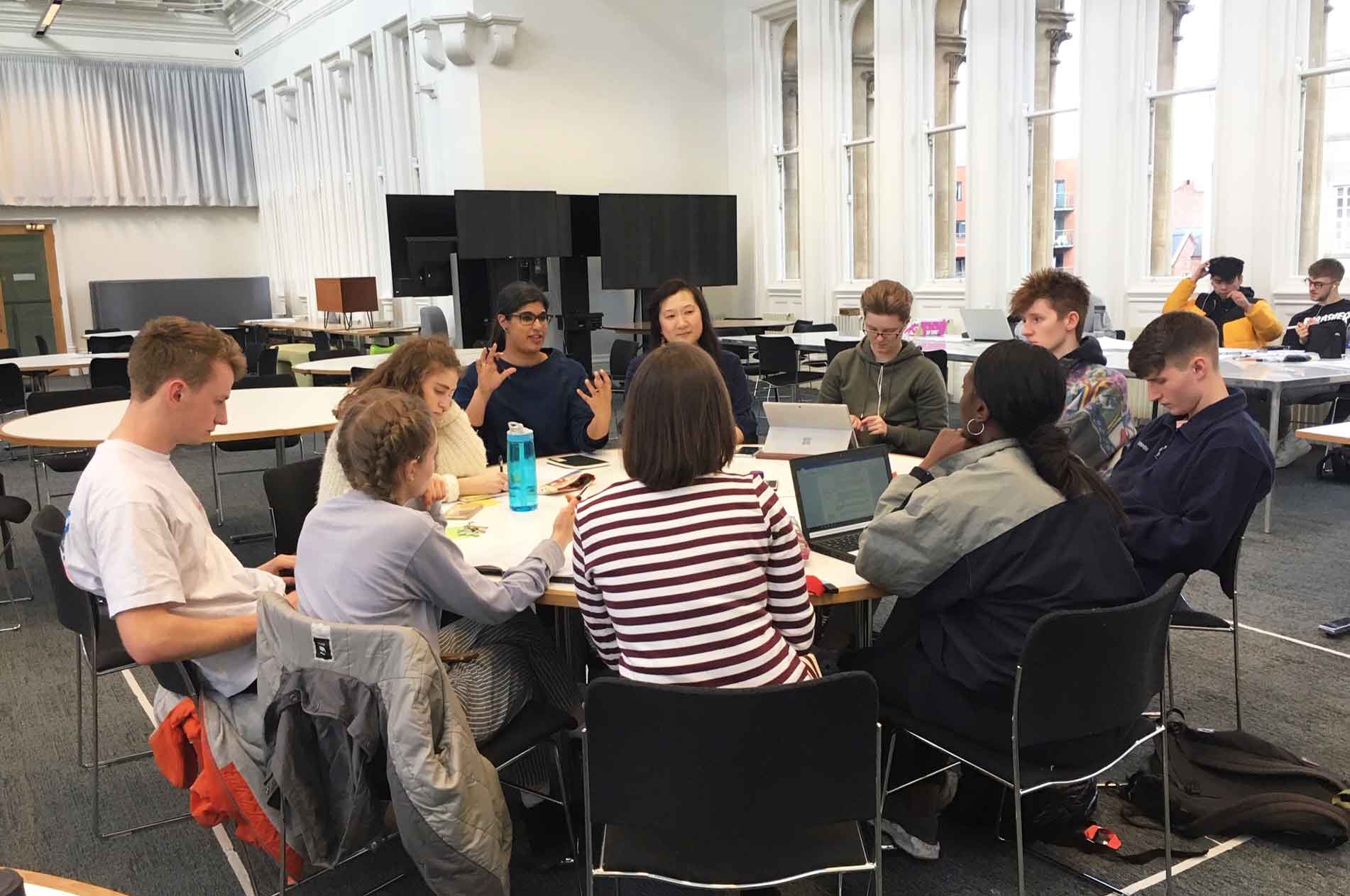Product Design second years are visited by Zara Arshad; designer, curator and journalist, for a design research workshop day
By Chloe Subitte | Published on 19 March 2019
Categories: Current students; School of Architecture, Design and the Built Environment;

This month, second year students from the Product Design subject area, which includes BSc (Hons) Product Design, BA (Hons) Product Design and BA (Hons) Furniture and Product Design were joined by Zara Arshad to discuss and disseminate contemporary design research in China, as part of their ‘Design Studies’ module.
A graduate from both Goldsmiths and the Royal College of Art’s History of Design programme, Zara has worked as a freelance designer, journalist, curator for the V&A, and is currently a design historian and a trustee for the Design History Society (DHS). She has also gone on to live in several different countries throughout her career so far, including Indonesia, Syria and China.
As a designer, Zara has worked with numerous clients such as Teach for China, The Library Project, United Nations Volunteers, Interior Design (magazine), and Icon. She has also worked for the British Council in China, and was part of the organising committees for Xin: Icograda World Design Congress Beijing (2009) and Beijing Design Week (2011).
Zara kicked things off in the morning of her visit by delivering a lecture surrounding her extensive research on contemporary design methods in China, focusing on the contemporary history of notable designers and brands, perceptions of copy culture within the country, and the ways in which modern Chinese design has gone on the influence the design industry.
She then continued the discussion and opened up the conversation to students with a Q&A style seminar, in which the groups chatted about their favourite designers, their inspirations from the lecture, and going on to ask Zara more about the intricacies of Chinese design and the cultural traditions surrounding both theory and practice.
We spoke to Zara after her sessions, to find out more about her thoughts on Chinese design and how these research sessions can be beneficial to design students: “My lecture (and the seminars that followed) aimed to demonstrate that contemporary design practice in China can be so much more than copy culture. This was a great opportunity to explore these ideas with NTU's practice-oriented students, who asked insightful questions about China's design field.”
She told us more: “These queries did not only extend to satisfying curiosity about a subject area that students might be less familiar with, but also entailed actively inquiring about how some of the concepts, techniques and even materials used by Chinese designers could influence their own projects. This, for me, is the value in these kinds of interactions - to push students to think about different approaches to, and outcomes of, design.”
Zara then accompanied students to a research workshop, highlighting to the group a variety of different research methods that they might use for consideration in their own projects – detailing the ways she had successfully undertaken these throughout her varied career. Students also brought along their own research projects from the module, allowing Zara to offer her advice and answer any questions the group had for their upcoming deadlines.
We caught up with Ayanna Wilson, a second year Furniture and Product Design student who told us more about her thoughts on the day’s session: “The lecture was really informative in terms of being exposed to the different Chinese cultures and how design is approached. We were shown real-world examples from natural binding to man-made design, which were both influenced from themes like the development of human interaction, health and sustainability.”
Ayanna continued: “What really intrigued me were the many examples of freelance designers who have merged design practice in a sustainable but practical way, achieving their individual design flair, without negatively affecting the environment. This was a huge inspiration to me, as it allowed me to really think about how to approach different materials to create a statement with my design.”
We also managed to catch up with Dr Hui-Ying Kerr, Senior Lecturer and Module Leader for Design Studies, who told us more about how the lecture series informs and inspires our students: “In our Design Studies lecture series, we cover a diverse range of themes, from design history to ethics, and more recently, international design. Of the latter, we are focused on exploring cultures from around the world, from Indian craft to Japanese aesthetics. Framed initially by an approach informed by postcolonial theory, the series aims to decolonise design thinking and demonstrate to students how broad and intercultural the spectrum of design is, preparing them as designers in an international and globally connected world.”
Ying elaborated: “Zara Arshad’s lecture on the contemporary Chinese design field was a highlight of our lecture series this term, taking us through not only the most exciting avant-garde design coming out of China today, but also how these developments are intricately interwoven with the complexities of national identity, governmental policies, technology and social and cultural politics. In listening to Zara, we all learned much more than what China design is, but also what design as a discipline could be in all our near futures.”